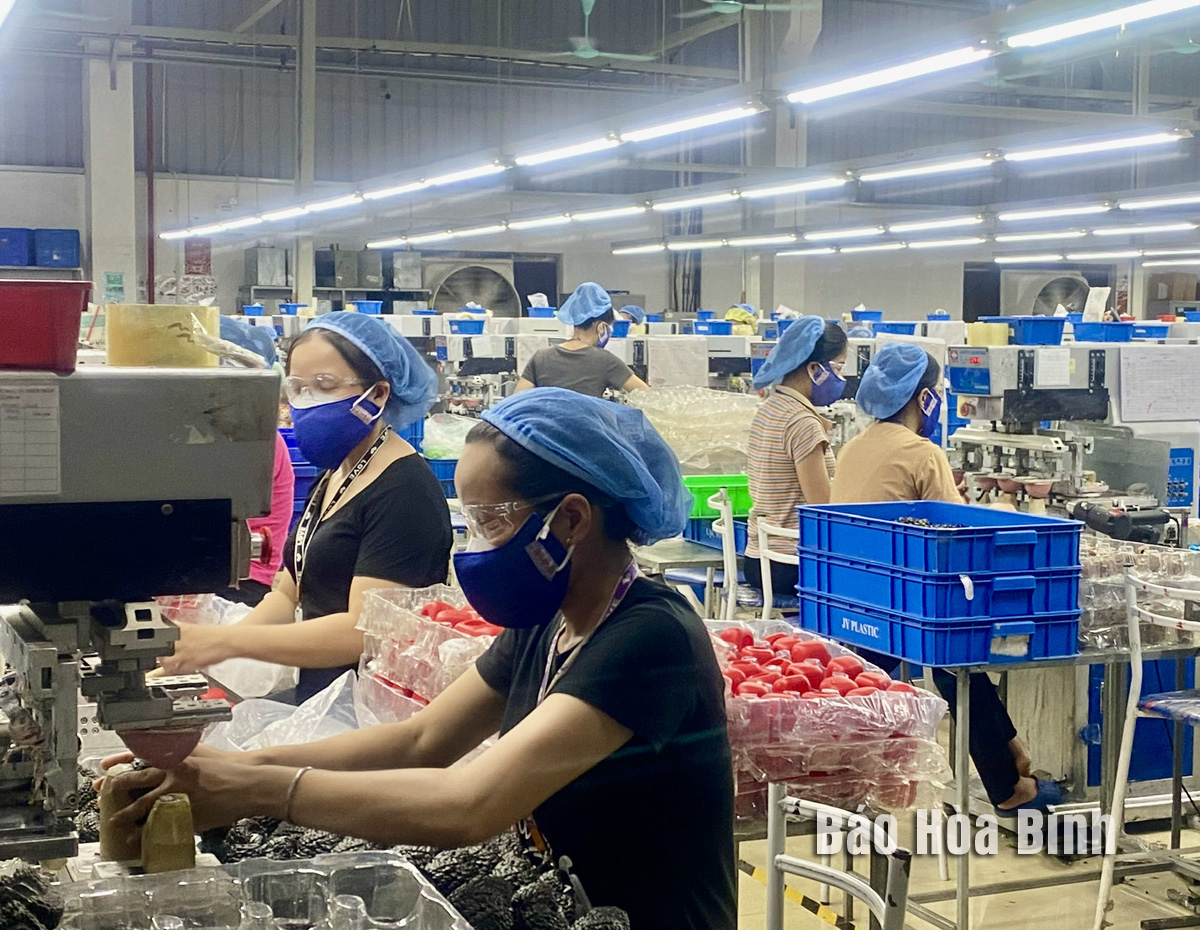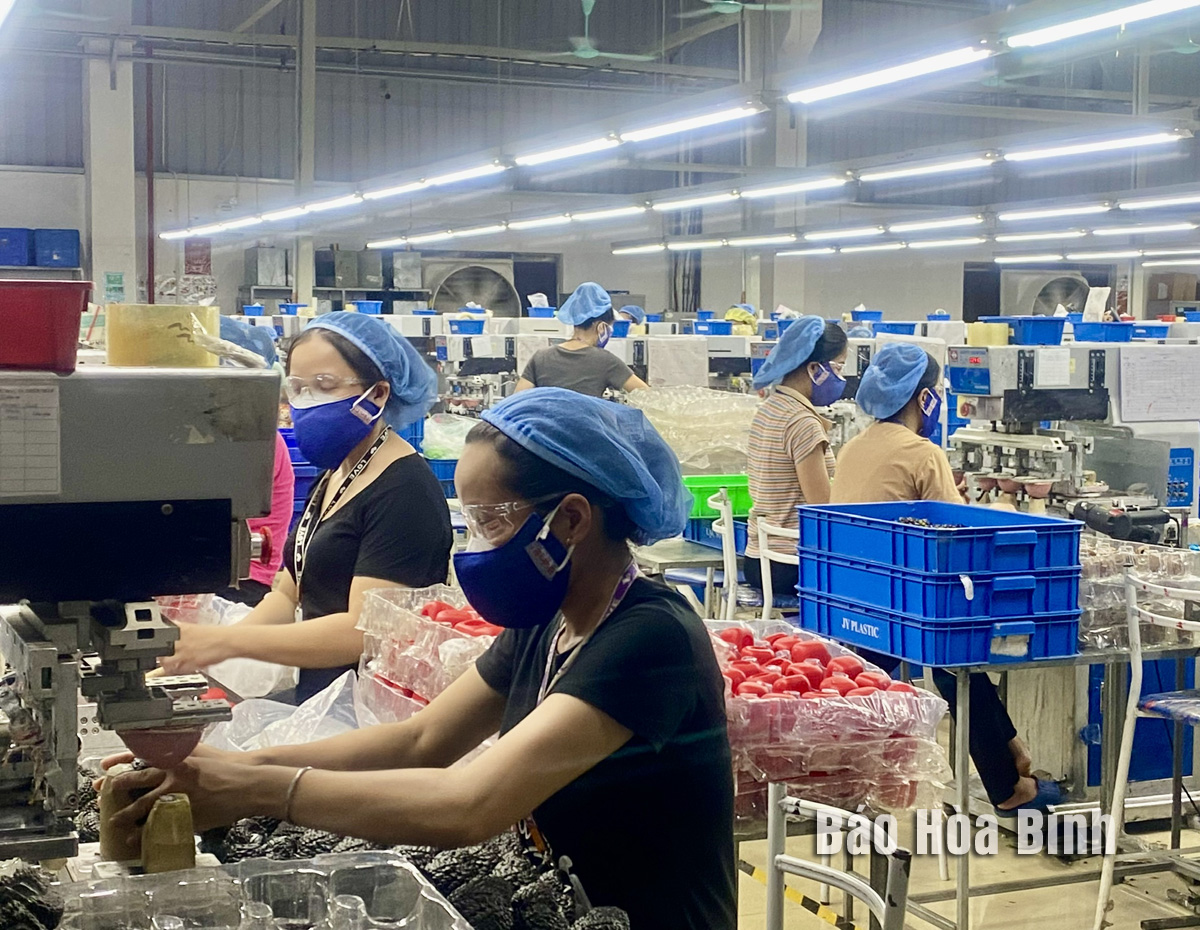
Outside the key economic region of Hoa Binh, yet Lac Son district has utilised its potential and strengths regarding labour, land, and transportation connectivity to attract investment to the locality, contributing to promoting socio-economic development.
PLac Son district actively attracts investment to promote industrial development and create jobs for labourers. Lac Son Plastic Co., Ltd generates jobs for about 1,300 local labourers.
Chairman of the district People’s Committee Bui Van Linh mentioned the advantages of the locality, saying that Lac Son boasts transportation and labour strengths, and large land for developing agriculture, forestry, industry, and services.
With a rich cultural heritage deeply rooted in the Muong ethnic identity, abundant historical and cultural relics, as well as unique local specialties and cuisine, Lac Son boasts great potential for tourism development.
The northeast communes of Mien Doi and Quy Ho, and the southwest communes of Ngoc Son and Tu Do have a mild climate, beautiful natural landscapes, and a forest coverage of over 50%, making them suitable for resort and eco-tourism development.
Apart from well-known destinations like Mu waterfall in Tu Do commune and Thung hill in Quy Hoa commune, many investors and enterprises have confidently poured money in eco-tourism projects and high-end eco-resort urban areas.
Over the recent years, Lac Son district has paid heed to strengthening investment promotion activities and proactively seizing opportunities to attract capital from domestic and foreign investors.
Moreover, the district has rolled out a red carpet for investors through efforts to speed up administrative reform, improve investment and business environment, and ensure the land clearance progress.
In 2023, the district had four more investment projects approved by the provincial People's Committee, lifting the total number in the locality to 37 worth over 12 trillion VND. These projects cover a combined area of 732 ha. As many as 20 out of these projects were completed and put into operation.
Currently, some investors are proposing to conduct surveys to develop projects with a total area of nearly 2,500 ha in the locality. Bui Van Linh said that businesses and investors have significantly contributed to promoting the district’s socio-economic development, and bringing vitality to all aspects.
The unemployment rate in rural areas has decreased, while the number of local labourers finding employment locally is increasing. Last year, the district’s per capita income reached 60 million VND (nearly 2,400 USD), leading to a reduction in the poverty rate by 4.32%.
According to data from the Hoa Binh Provincial Party Committee, the industrial production index for the first six months of 2025 is estimated to have increased by 20% compared to the same period last year. This marks the highest year-on-year growth rate for this period since 2020.
In the first six months of 2025, Hoa Binh province’s export turnover was estimated at 1.145 billion USD, marking an 18.11% increase compared to the same period in 2024. Import turnover was estimated at $ 804 million, a 17.15% increase, which helped the province maintain a positive trade balance.
The lives of the ethnic minority farmers in Tan Lac district have gradually improved thanks to the new directions in agricultural production. This is a testament to the collective strength fostered through the professional associations and groups implemented by various levels of the district’s Farmers’ Union.
With the motto the "product quality comes first,” after nearly one year of establishment and operation, Muong village’s Clean Food Agricultural and Commercial Cooperative, located in Cau Hamlet, Hung Son Commune (Kim Boi district), has launched reputable, high-quality agricultural products to the market that are well-received by consumers. The products such as Muong village’s pork sausage, salt-cured chicken, and salt-cured pork hocks have gradually carved out a place in the market and they are on the path to obtaining the OCOP certification.
In the past, the phrase "bumper harvest, rock-bottom prices" was a familiar refrain for Vietnamese farmers engaged in fragmented, small-scale agriculture. But today, a new spirit is emerging across rural areas of Hoa Binh province - one of collaboration, organisation, and collective economic models that provide a stable foundation for production.
Maintaining growing area codes and packing facility codes in accordance with regulations is a mandatory requirement for agricultural products to be eligible for export. Recently, the Department of Agriculture and Environment of Hoa Binh province has intensified technical supervision of designated farming areas and packing facilities to safeguard the "green passport" that enables its products to access international markets.



